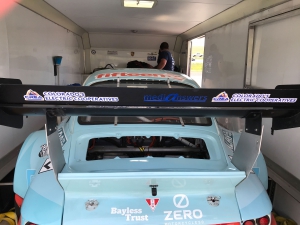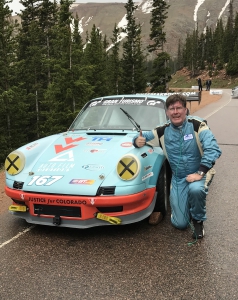Making a Difference for Monarchs
By Derrill Holly, National Rural Electric Cooperative Association
Three to four generations of monarch butterflies migrated to their summer ranges last spring. Now, a single generation is returning to its wintering grounds only to begin the first leg of the 2020 migration early next year.
“We call them the super generation,” said Mara Koenig, of the U.S. Fish and Wildlife Service. “They live for about eight months, overwintering down in Mexico and waiting for the right conditions to return to their U.S. range in the spring.”
According to Koenig, communications coordinator for FWS’s Monarch Butterfly/ Pollinator Program, the largest migration of butterflies makes a 3,000-mile journey to Mexico from states south of the Great Lakes and east of the Rocky Mountains. A smaller population migrates from Arizona and the Pacific Northwest toward the California Coast. The immature insects spend the next few months roosting and eating in super colonies in a phase called diapause, when their reproductive organs are not mature.
“They develop those organs as they’re migrating north for the spring,” Koenig said. “They’ll do their first round of life cycle around Texas, Oklahoma and the southern United States and then slowly move north with each life cycle.”
Milkweed makes the difference
The FWS estimates that there are 128 million monarch butterflies left in North America, including a non-migratory population in south Florida. Support for saving the species has grown in recent years, spurred by recognition of pollinator preservation and their symbolic value to environmental stewardship.
“Everybody can play a part in monarch butterfly conservation,” Koenig said. “It takes small, simple actions such as planting milkweed in a garden or even in a pot on your balcony, to having large swaths of landscapes that are conserved for pollinator habitats.”
While various flowering plants provide the necessary nectar needed for nourishment, milkweed is crucial to the species survival because it is the only plant capable of hosting developing caterpillars.
“The monarch caterpillar requires the milkweed plant to survive and go through its life cycle process before it can then migrate back down to Mexico for the winter,” Koenig said, adding that “the plants provide the energy needed to spin cocoons.”
Butterfly backers are out to change the image of milkweed, long considered a nuisance plant because it is poisonous to cattle, horses and other livestock. Because of that and the fact that it is difficult to control, it is excluded from windbreak and right-of-way plantings. But that is changing as efforts are made to balance the monarch butterfly’s need for milkweed with protecting livestock.
“We want to plant over one billion stems of milkweed throughout the monarch’s migratory range,” said Patrick Fitzgerald, senior director of community wildlife at the National Wildlife Federation. “It would provide enough habitat for the monarch to increase its numbers and reproduce.”
That spurred efforts to encourage gardeners to include ornamental milkweed varieties in landscapes and container gardens. Several colorful species can be cultivated and controlled to prevent them from overrunning garden space.
The NWF also partnered with the FWS and dozens of environmental and conservation groups on the promotion of monarch butterfly conservation initiatives.
Fitzgerald authored the Mayor’s Monarch Pledge, which serves as a blueprint for community action, recommending 25 steps groups and individuals can take to help support butterfly and other pollinators’ conservation.
“We encourage people to look at park systems, open spaces, rights of way, schools and other public and undeveloped areas where you could possibly plant and manage areas for monarchs,” Fitzgerald said. “We have a guide online, and we have webinars to help land managers choose seed mixes and understand what decisions they can make that will help the monarchs.”
How electric co-ops help
Keeping with the seventh cooperative principle of Concern for Community, electric cooperatives across the country are embracing pollinator conservation.
Vegetation management programs, designed to help maintain the reliability of your electricity, have been adapted to help provide year-round pollinator habitats and food sources for migratory wildlife, including butterflies.
“We also need the other plants that the adult butterflies can use as a food source. They need nectar, so we need other types of plants throughout the range,” Fitzgerald said.
“All those blooming flowers that we see in the fall are a great source for them to fuel up,” Koenig said. “Making sure that those are available throughout the migratory range ensures that they have those reserves to go down to Mexico and wait out the winter, and enough reserves to start making that migration back north in the spring.”
Along utility pole lines near roadside ditches, across expanses of rural rights of way and on the grounds of electric substations, power plants and solar arrays, electric cooperatives are working with community groups to make open space even more nature friendly.
In the spring of 2019, Poudre Valley Rural Electric Association in Fort Collins hosted a Plant Day with Colorado State University Extension where the electric co-op invited Resurrection Christian School high school students to help plant pollinator-friendly seeds at the cooperative’s Coyote Ridge Community Solar Farm. This project not only makes the solar farm more attractive to passersby, but also creates an appealing place for pollinators of several varieties.
“The more habitat that’s created, the more likely there is a possibility for the monarch butterfly population to recover to a resilient population,” Koenig said, noting that the goal is to reverse a decline first identified more than 20 years ago. “We’re creating habitats for monarch butterflies and for other pollinators, including grassland songbirds. Upland game birds and even waterfowl can benefit from this.”
Officials at the NWF agree. They’re particularly optimistic about the potential of partnerships with electric co-ops, other utilities, state and local transportation departments and railroad operators.
“They manage those strips of land that we would call wildlife corridors or monarch corridors,” Fitzgerald said. “When we plant more milkweed and more native flowers in these areas, it could make a big difference.”
Always committed to the Seven Cooperative Principles, this effort among electric cooperatives throughout the United States, including Colorado, is yet another example of how co-ops are showing concern for their communities.
Derrill Holly writes on consumer and cooperative affairs for the National Rural Electric Cooperative Association.








